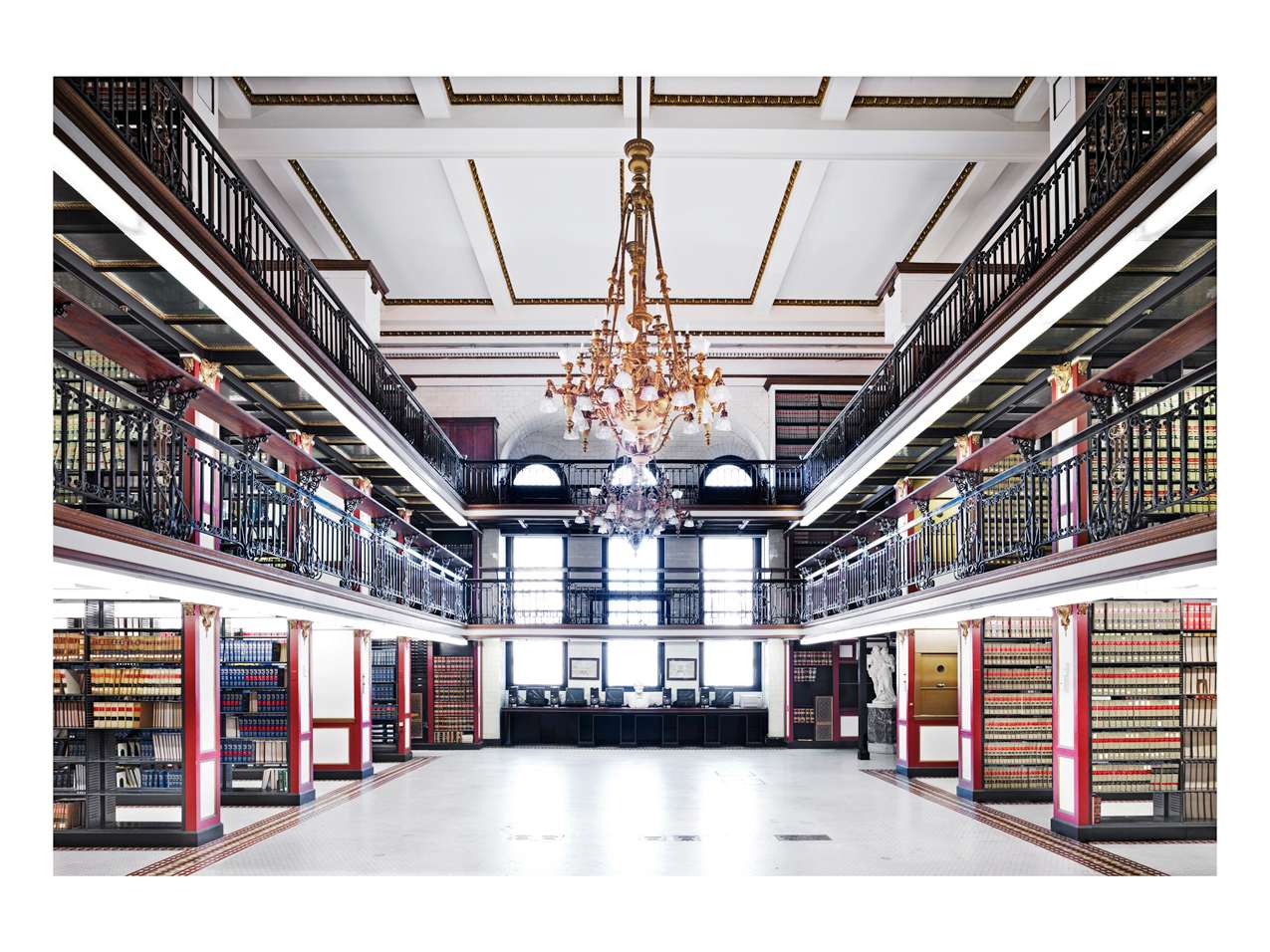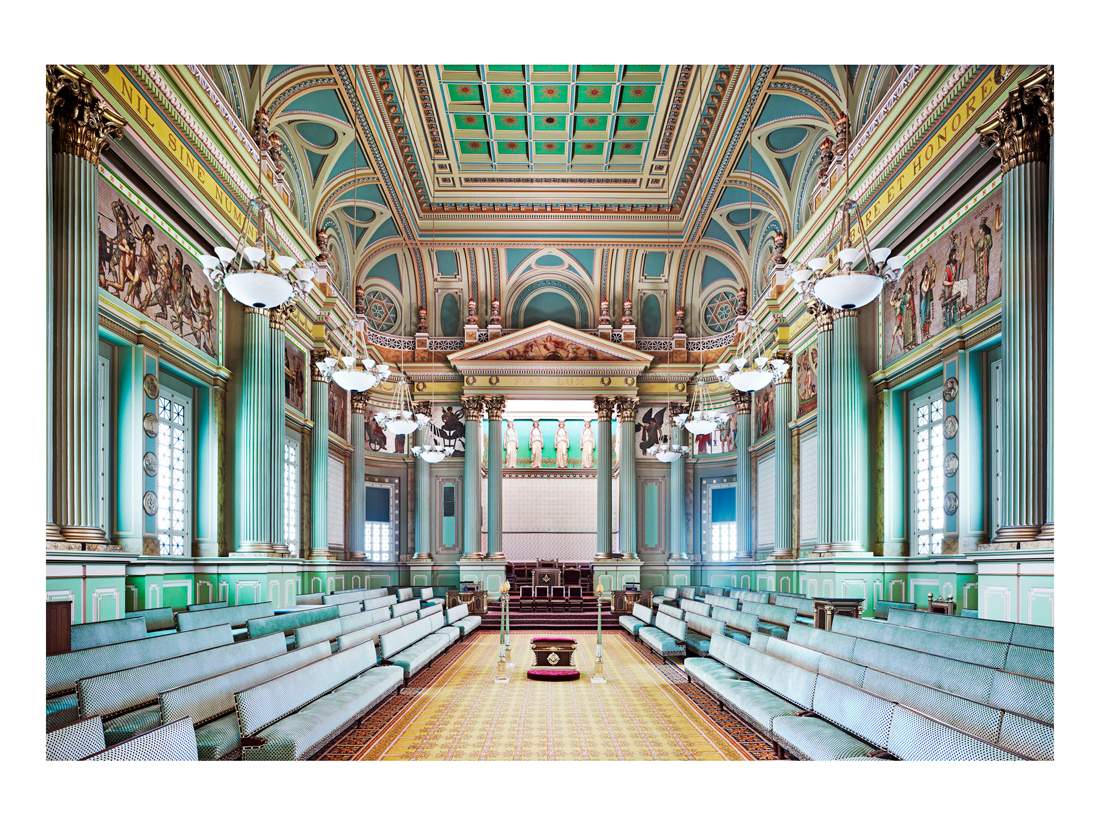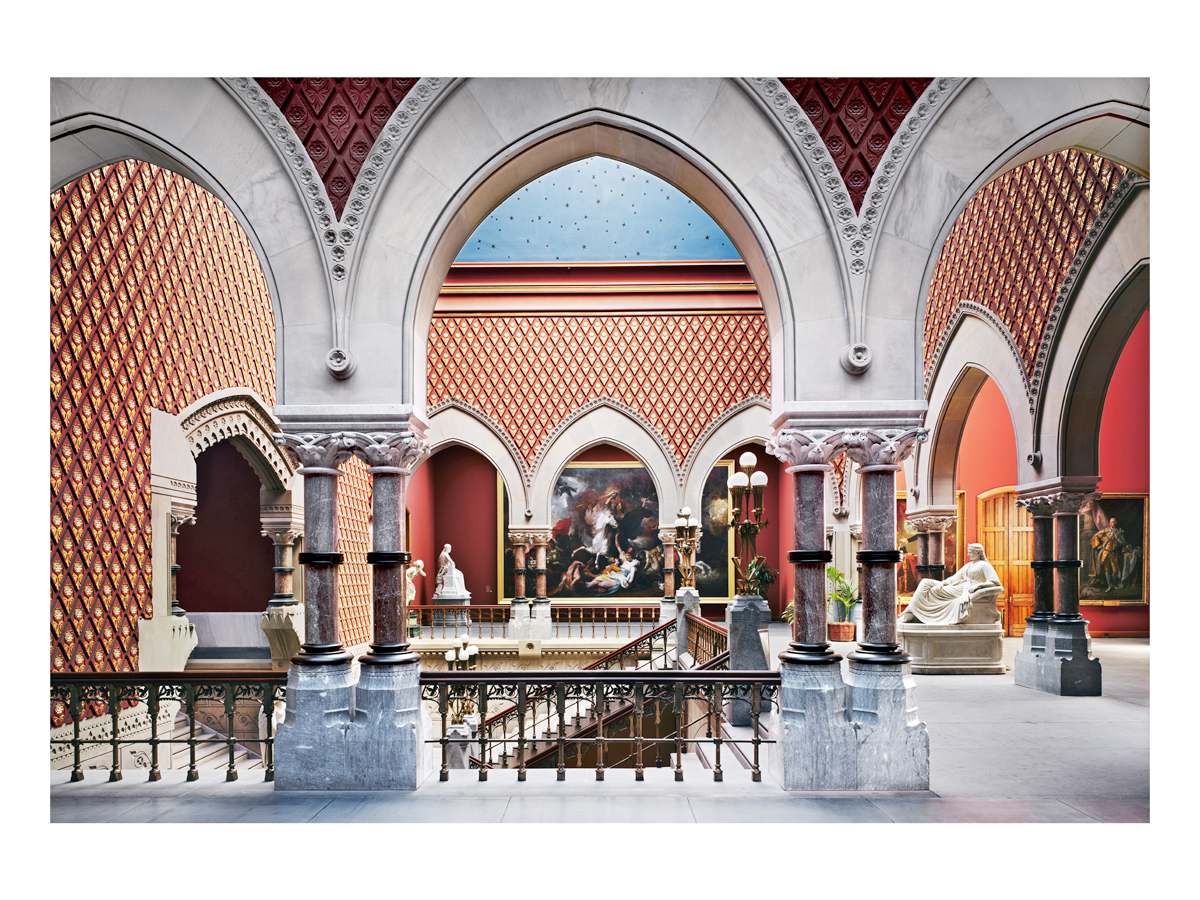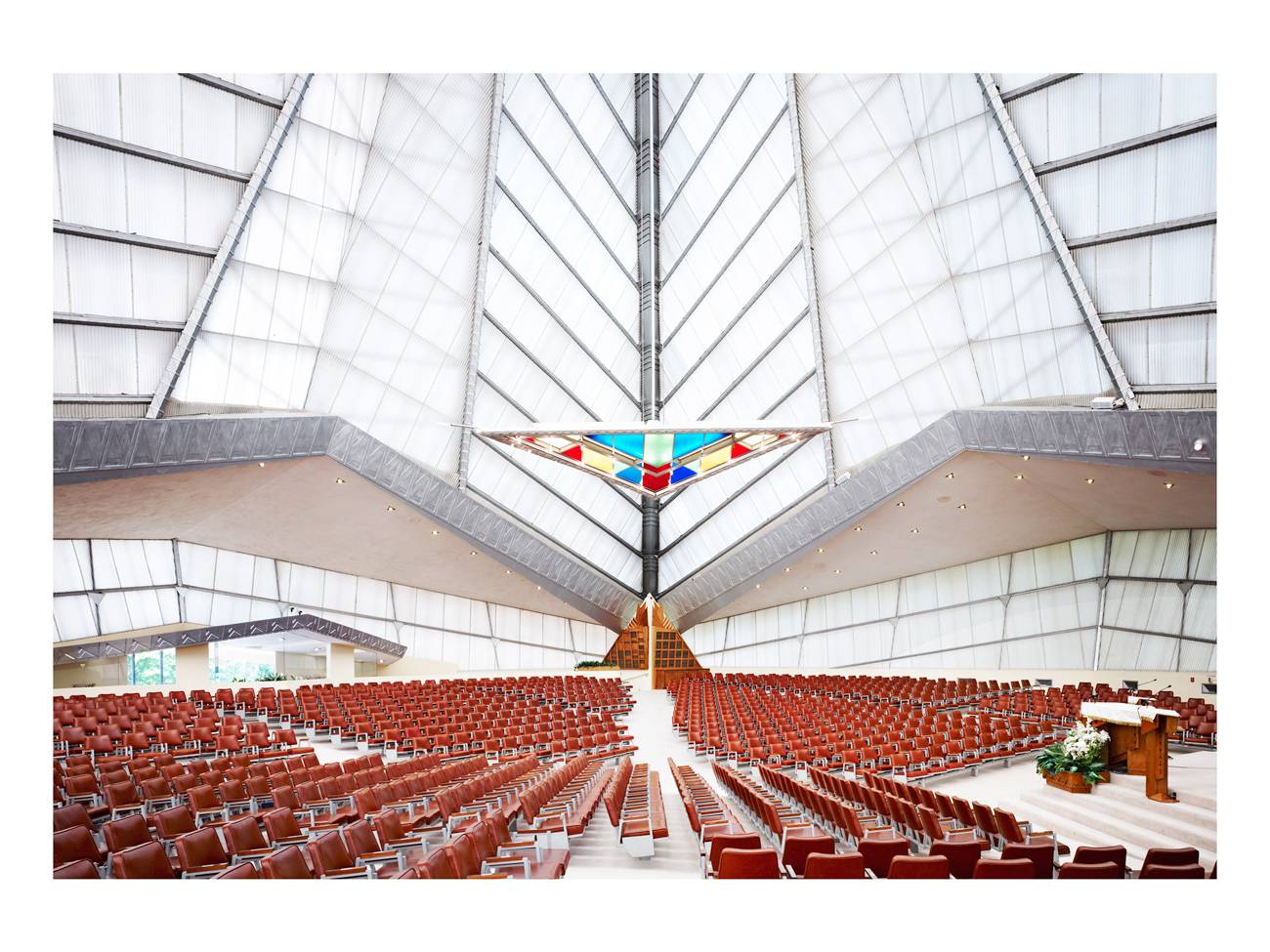March 12 – April 19, 2009
Arcadia University Art Gallery
This exhibition presents a selection of four, wall-sized, color photographs portraying interiors of local historic landmark buildings by this Cologne-based artist (b. 1944).

Selected from a larger group of images taken in 2007, the photographs depict views within the Pennsylvania Academy of the Fine Arts, the Masonic Temple (Corinthian Hall), City Hall Law Library, and Beth Sholom Synagogue (Elkins Park). Following her signature approach, Höfer photographed these interiors devoid of people but profuse with signs of human aspiration. Every sharply focused detail of these vivid prints is frozen into silence by the photographer’s detached and calibrated viewpoints and her fearless use of axial symmetry. Whether seen as stage-like settings for imminent events or historical “period rooms” ripe for interpretation, these expansive images (each 8 feet wide) offer viewers uncanny forms of optical access despite the sense of bodily exclusion they elicit. (As critics have remarked, the clarity and tranquility of Höfer’s photographs permit the unaided eye to register more visual information than would be made possible by scanning the actual room.)
As a group, the photographs on view chart architectural developments from the organic motifs of Frank Furness’ late-Victorian vestibule to Frank Lloyd Wright’s final
commission—a modernist evocation of a Mayan temple. For American audiences confounded by the majestic otherness of Höfer’s views of European palaces, theatres, and libraries (as well as the remote realms of experience they often represent), this exhibition offers an unusual opportunity to explore the impact of Höfer’s strategy on more familiar and available subjects. Studying this work so close to where it was made (Beth Shalom is only a five-minute drive from gallery) may also help viewers distinguish the given allure of Höfer’s imposing subjects from the artist’s deceptively austere and rigorous means.

Höfer was a student at the Dusseldorf Academy of Art from 1973 to 1982 where she studied photography under Bernd and Hilla Becher. Following the acclaimed example of the Bechers’ systematic documentation of industrial buildings, Höfer has dedicated her mature practice to recording institutional interiors. Since 1975 she has consistently presented her work in group and solo exhibitions in Europe and the United States. For “Documenta 11” (2002) she photographed all twelve extant casts of August Rodin’s 1889 sculptural grouping The Burghers of Calais, a project that brought her to Philadelphia for the first time. “The Architecture of Absence,” a traveling retrospective surveying her work from 1979 to 2003 (organized by the Norton Museum of Art), traveled to the ICA (Philadelphia) in 2006.
While Höfer has occasionally organized her photographic series around interiors in particular municipalities (such as Dresden and Bologna), her “Philadelphia” project signals first time that she has documented a U.S. city in her comprehensive, systematic method. This is due, in part, to the impediments of post-9/11 security regulations. Höfer’s 2007 visit to Philadelphia was encouraged by collector and patron Mari Shaw, who was instrumental in facilitating the access required by Höfer’s process. The week-long shooting period took Höfer inside a total of eight landmark venues including City Hall, Eastern State Penitentiary, Girard College, and the Academy of Music. A larger selection of photographs from Höfer’s “Philadelphia” project was presented in January of 2009 at Sonnabend Gallery, New York.

About the Lecture and the Speaker
To place the four photographs on view at Arcadia in an art historical context, the gallery will host a lecture by art critic and historian Michael Fried. Entitled “Why Photography Matters as Art as Never Before” and based on his recent book of the same title published by Yale University Press, the lecture will take place on Saturday, April 11, at 4 p.m. in Arcadia’s Stiteler Auditorium (Murphy Hall).

Fried’s presentation will situate Höfer’s work within an argument that demonstrates how, in the late 1970s, serious art photographers began to work at large scales to produce works “for the wall”. Fried contends that these developments induced photographers to address questions about the relationship between the photograph and the viewer standing before it, issues that had previously belonged to painting. In his book, Fried further demonstrates that certain problems associated with “the condition of theatre”—prompted by his interpretation of Minimalism and first discussed in his still debated essay “Art and Objecthood” (1967)—have come to the fore once again in recent photography. In his close readings of Höfer’s photographs, Fried explores a productive contrast between the “emptiness of Höfer’s interiors and the transcendent clarity with which they are depicted” and the “modernist gallery space” as described by Brian O’Doherty in his classic text “Inside the White Cube” (1976). Employing works by artists such as Jeff Wall, Hiroshi Sugimoto, Cindy Sherman, Thomas Struth, Andreas Gursky, and Thomas Demand (all whom will figure in his lecture, along with Höfer), Fried proposes that photography is now at the leading edge of contemporary art and that its position in this regard is unprecedented.
Fried is the author of numerous books and articles including Absorption and Theatricality: Painting and the Beholder in the Age of Diderot; Realism, Writing and Disfiguration: On Thomas Eakins and Stephen Crane; Courbet’s Realism; Manet’s Modernism: Or The Face of Painting in the 1860s; and Art and Objecthood: Essays and Reviews. In 2004, Fried was awarded a Distinguished Achievement Award by the Andrew W. Mellon Foundation. A book by him on Caravaggio, based on the 2002 Andrew W. Mellon Lectures in the Fine Arts, will appear in 2010. Following Michael Fried’s lecture there will be a reception in the art gallery. Both the lecture and the exhibition are free and open to the public.
“Why Photography Matters as Art as Never Before”
Lecture by art critic and historian Michael Fried, J.R. Herbert Boone Professor of Humanities and the History of Art at the Johns Hopkins University
Saturday, April 11, 4 p.m., Stiteler Auditorium, Murphy Hall
Public reception in the art gallery immediately following.

